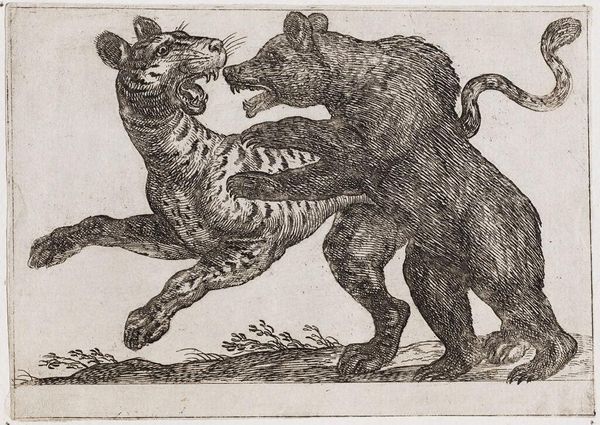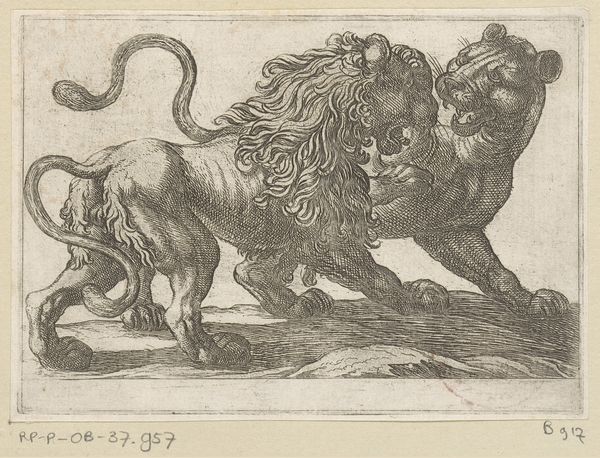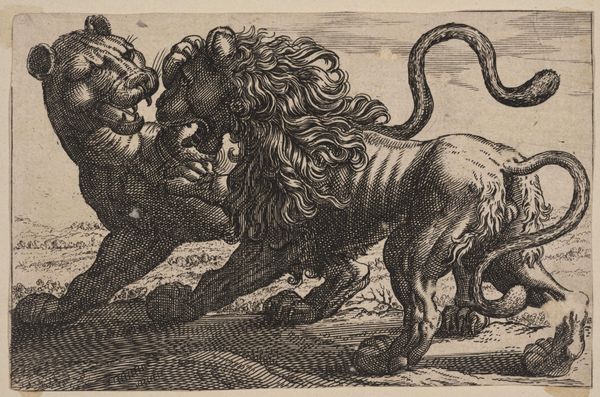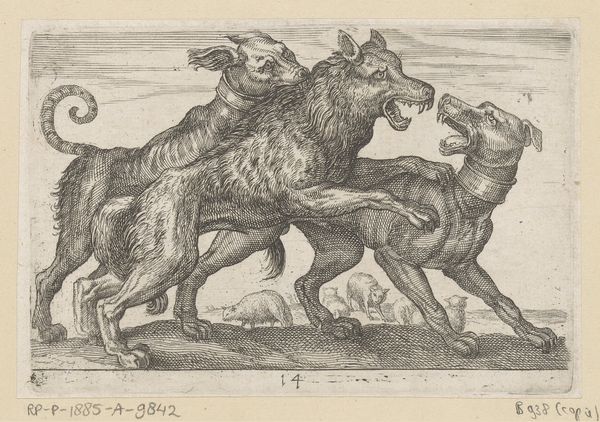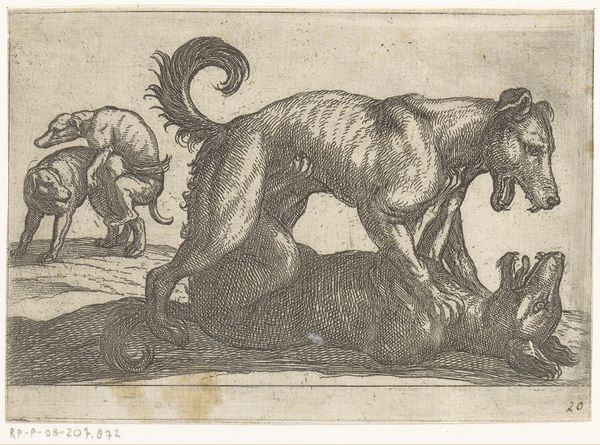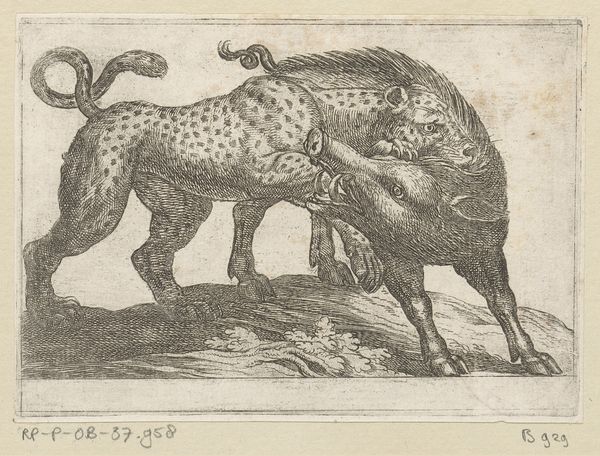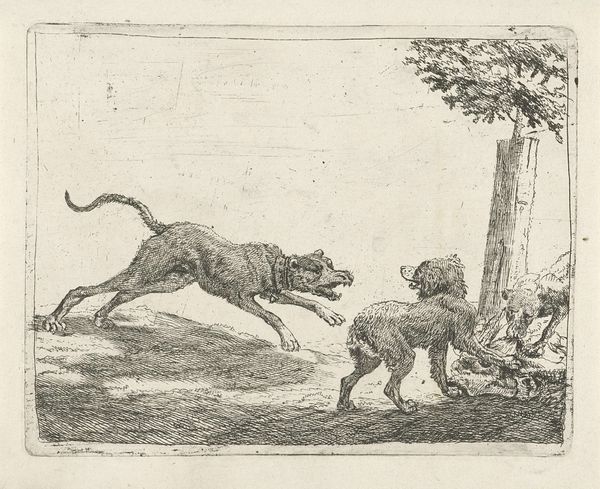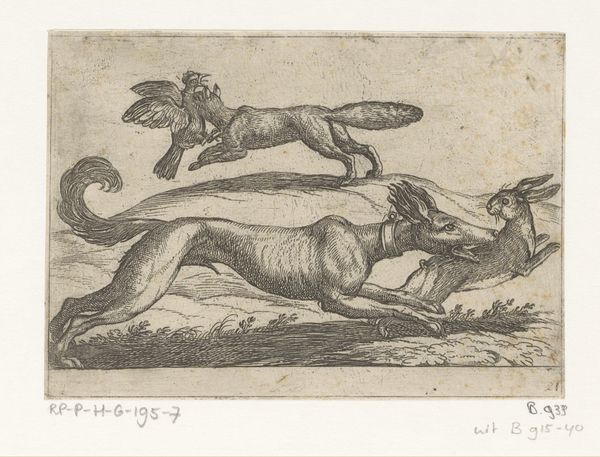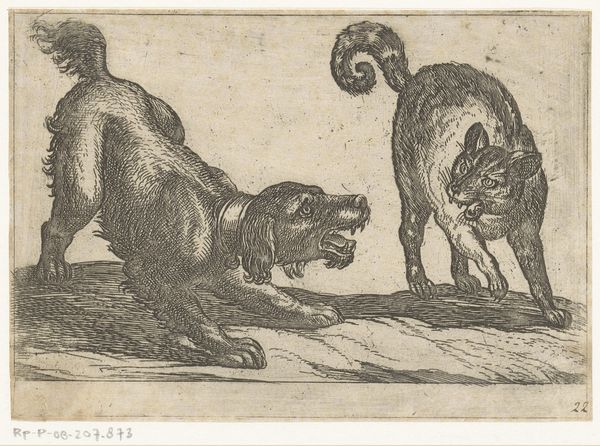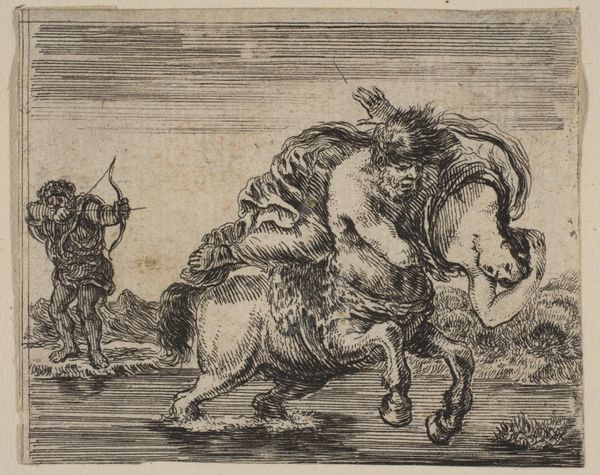
print, engraving
#
narrative-art
#
baroque
#
animal
# print
#
old engraving style
#
figuration
#
form
#
line
#
engraving
Dimensions: height 93 mm, width 131 mm
Copyright: Rijks Museum: Open Domain
Curator: It has such ferocity! The raw energy just leaps off the page. Editor: Agreed. This engraving, "Een beer vechtend met een tijger," or "A bear fighting with a tiger" was created around 1600 by Antonio Tempesta. The piece is currently held here at the Rijksmuseum. It’s a scene brimming with violence, expertly rendered with fine lines. What strikes you beyond the obvious drama? Curator: I see an interrogation of power, an intersection of the colonial gaze. Consider how these animals, exotic to Europe at the time, became symbols of dominance and control in the context of expanding empires. Their struggle mirrors the violence enacted on colonized peoples. Editor: I'm compelled by Tempesta's printmaking process, and the accessibility of it. It removes it from a class context that oil paintings tend to adhere to. This makes the art, and it's symbolic ferocity, much easier to engage with for a wider audience. Look at the bear's fur - it is an incredible variety of marks, to indicate its dense, rough coat, and the muscularity of the beasts! Curator: Absolutely, the choice of subject underscores broader themes about societal hierarchies. Bears, especially, carry complex symbolic weight as representations of both brute force and nobility. Here, we see those associations challenged as it engages in an uncharacteristic struggle with another predator. How much are class anxieties explored with printmaking versus paintings in that moment? Editor: Printmaking at the time allowed for more open markets. There would likely be less restrictions when considering who could buy prints versus oil paintings, which were typically made for aristocrats or to fill specific church commissions. The materiality, in this case paper, would mean its transportability was far greater and the end use very different from paintings hanging on the wall. I mean, it's interesting, isn't it, that an object representing a certain nobility could also be created so democratically? Curator: It's true. We have the means to view nature with the masses, yet the message being consumed through art remains fixed to hierarchical anxieties of the day. The raw, visceral representation of the struggle creates a certain primal narrative around class divisions. Editor: This tension - or the raw primal-ness as you put it - is so successfully translated via the physical marks on the plate, isn’t it? I leave with such a strong appreciation for his method of producing such emotion through practical means. Curator: A sentiment that rings powerfully even now, the themes presented allow us to think more about animals placed within intersectional narratives today.
Comments
No comments
Be the first to comment and join the conversation on the ultimate creative platform.
